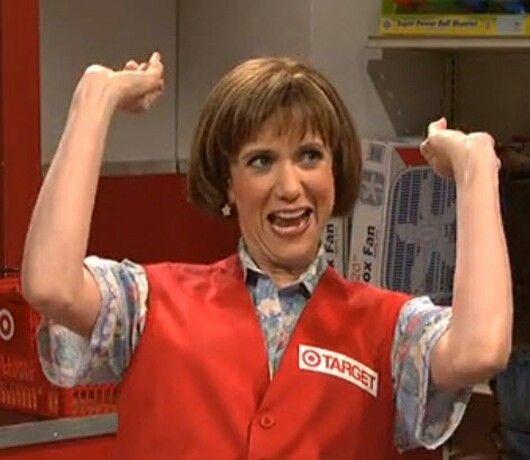
Facebook Campaign Objectives: What Every Advertiser Needs to Know
Often, Facebook advertisers put so much focus on their creative, message, and targeting that they overlook their settings. While, yes, creative may be the most important part of your advertising strategy on Facebook, it won’t drive the results you’re looking for if you don’t implement the proper objectives and settings for your campaign.r
Put it like this: overlooking your Facebook Ads objective is like Tom Brady showing up on game day and forgetting all of the plays (which we all know would never happen, but hopefully you get the point).
In this guide, I will break down Facebook’s ad objectives and settings so that you know exactly what features to focus on during set up. I’ll also provide insights on how to set your next campaign up for success.
PS: Did you know that the click-to-call option is now available for Website Traffic campaigns?
Selecting your Facebook ad objectives and settings
As we know, Facebook’s ad auction relies on algorithmic learning to make decisions. From who’s seeing the ad to where and when an ad shows to how much it costs, the algorithm requires a significant amount of information to make decisions. You provide some of this information when you set up your Facebook audience targeting. But what other settings does the algorithm consider while making these decisions?
- Objective
- Optimization settings
- Bid strategy
- Budget
Let’s get started with your Facebook ad objectives.
Objective
You’ll see that objective is at the top of this list. That’s because this is the first, most crucial decision you’ll make when creating your new campaign. When selecting your Facebook ad objective, you will be given three options:
- Awareness
- Consideration
- Conversion
While the ad objective names are relatively straightforward, it’s important to understand what your first decision will tell the algorithm:
- Awareness: Look for opportunities to increase my reach and drive brand awareness.
- Consideration: Find delivery opportunities that drives engagement and web traffic.
- Conversion: Deliver my ads when there is an opportunity to drive conversions.
After you’ve chosen your Facebook ad objective, you’ll have a list of subcategories to choose from depending on your goals:
Once you’ve made your selection, the Facebook algorithm will review your ad objective and match your goal up to the relevant KPIs, looking something like this:
- Awareness:
- Impressions
- Reach
- Consideration:
- Clicks
- Engagement
- Video Views
- Messages
- App Installs
- Lead generation
- Conversion:
- Conversions
- Sales
- Store Visits
It’s important to understand what metrics the algorithm will favor, because this will be reflected in your campaign performance.
Optimization settings
Now that you’ve selected your Facebook ad objective and named your campaign, you’ll head into your ad set. This stage is all about your optimization settings, which will include:
- Optimization event
- Optimization for ad delivery
- Bid strategy
The optimization event is a key indicator of success for the algorithm. This is a critical decision, because your choice will tell the algorithm what you count as success for your selected ad objective. Over time, the algorithm will learn from this signal and begin to understand the optimal path in ad delivery for your selections.
In the example below, each advertiser’s conversion objective is to drive whitepaper downloads from their campaign. Here’s what they choose for their optimization event:
- Advertiser 1 selects their “download” conversion event
- Advertiser 2 selects their “viewed landing page” conversion event
Which advertiser will drive more conversions? That would be Advertiser 1.
For Advertiser 1, the algorithm will look to deliver their ads to users that are likely to complete their download. On the other hand, for advertiser 2, the algorithm will optimize by delivering their ads to users likely to visit their landing page. The signal gap between a landing page visit and a download will make the algorithm less efficient in driving conversions for Advertiser 2.
With your ad objective and optimization event set, you’ll need to select your ad delivery settings. This will range from impressions to landing page views up to conversions:
Here, you should select your primary goal and make sure it ties back to both your initial ad objective and your optimization event.
Bid strategy and budget
After you’ve established your goals and translated them into your settings, you need to tell the algorithm how much you’re willing to spend. This is controlled by your bid strategy:
It’s also dependent on your budget:
Each of these settings for your ad set will advance the algorithm’s ability to succeed. Following set up of your ad set, the algorithm goes from understanding how to drive volume for your ad objective to understanding how to efficiently drive volume for your ad objective.
The Importance of Facebook Ad Objectives
Maybe the importance of taking time to carefully define your Facebook ad objectives and settings is best explained with an analogy to Target…because who doesn’t love a good trip to Target?
Scene: On a whim you’ve arrived and walked into the door of Target. You have no purchase intentions, so you walk in without a shopping list or goal in mind. Read: you’re missing your objective.
You’re immediately drawn into the clothing section, because let’s be honest, who can pass up a new sweater or bathing suit (even if it is November)? After adding a few items to your cart, you head right into the shoes section, and you start trying on a few pairs. Throwing your new shoes into the cart, you venture back into the aisle. You continue aimlessly, walking through the kitchen supplies and contemplating that Magic Bullet you’ve seen in all those commercials, and then you find yourself in the home decor section. Three more items later, and your cart is starting to overflow. You look down at your watch and realize you’ve wasted an hour walking up and down every aisle.
Because you never set your objective, you didn’t have the chance to select your optimal path to completing your shopping trip at Target in an efficient manner.
Now that you’ve exhausted each aisle and you have a full cart, you head over to checkout. You place your items on the belt, and the cashier begins scanning your items in. Your new shoes scan through and you see the price:
Because you didn’t set an objective or optimal path of your shopping trip, you’re spending way above your typical target cost for a pair of shoes. The items continue to scan through, and your grand total continues to add up. Hundreds of dollars later, you realize you’ve spent way too much because you never set yourself a budget.
Now, I know this took a while to get to, but what I’m trying to tell you is this: When you don’t consider your campaign settings important, the Facebook algorithm could perform just like this unplanned trip to Target, aimlessly delivering your ads and frivolously spending your budget.
Pay attention to your Facebook ad objectives and settings
To build out a successful campaign on Facebook, you need to take time when selecting your ad objective and settings in order to successfully reach your goals and make the most out of your advertising budget. In fact, optimizing for the wrong objective is one of our 7 Budget-Wasting Facebook Ads Mistakes.
If you’re already carefully selecting your settings or you’re just looking for more ways to improve your campaigns, try running our free Facebook Grader. You’ll receive actionable insights to help boost your account performance in just 60 seconds. And make sure you stay tuned for part two of this post where I will show you how to leverage Facebook ad objectives to create a cross-funnel campaign strategy.












![The Complete Guide to Social Media Image Sizes in 2024 [Free Templates]](https://www.wordstream.com/wp-content/uploads/2024/02/social-media-image-size-feature.jpg)
![Best Times to Post on Social Media in 2024 [For Every Platform]](https://www.wordstream.com/wp-content/uploads/2024/01/best-time-to-post-on-social-media-wordstream-feature.webp)
Comments
Please read our Comment Policy before commenting.